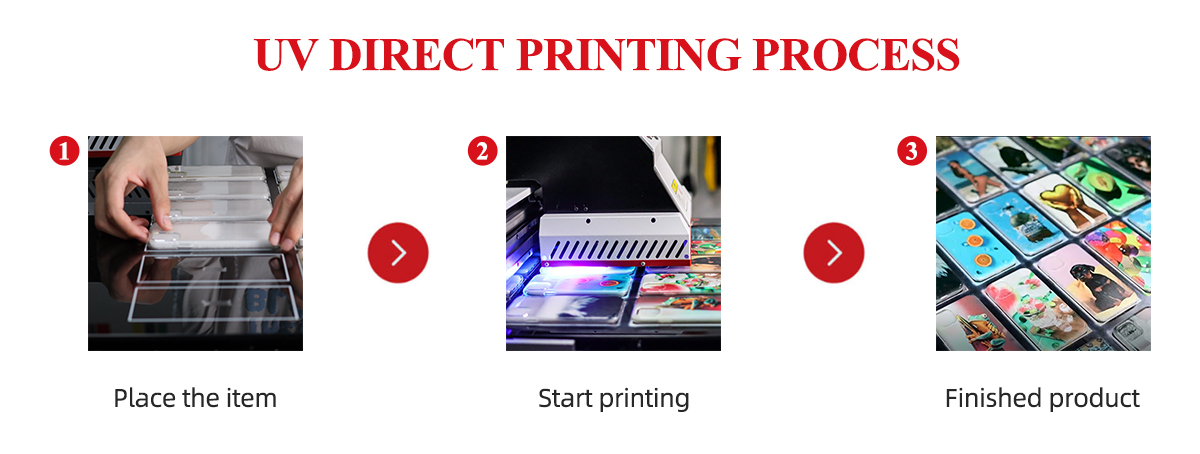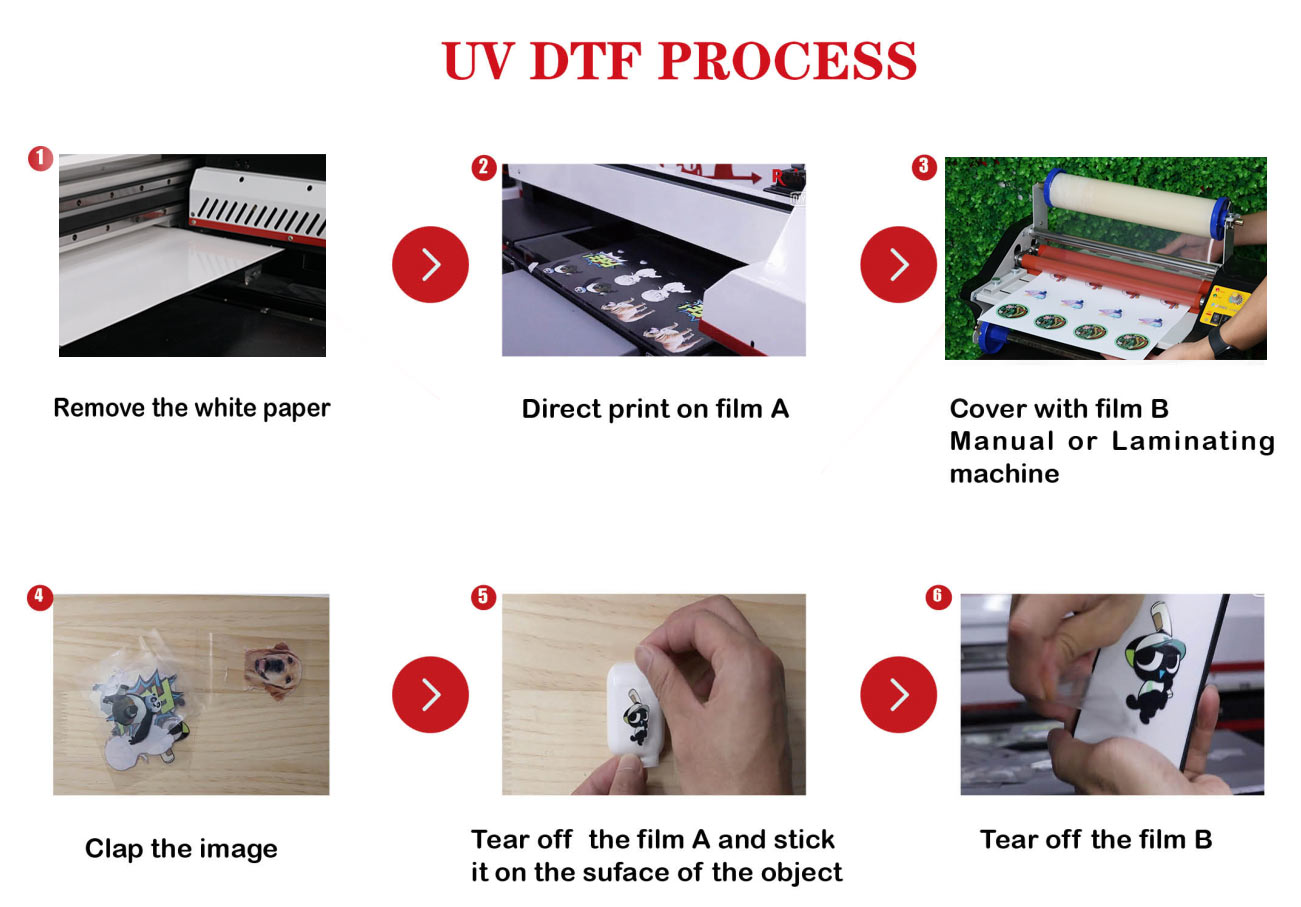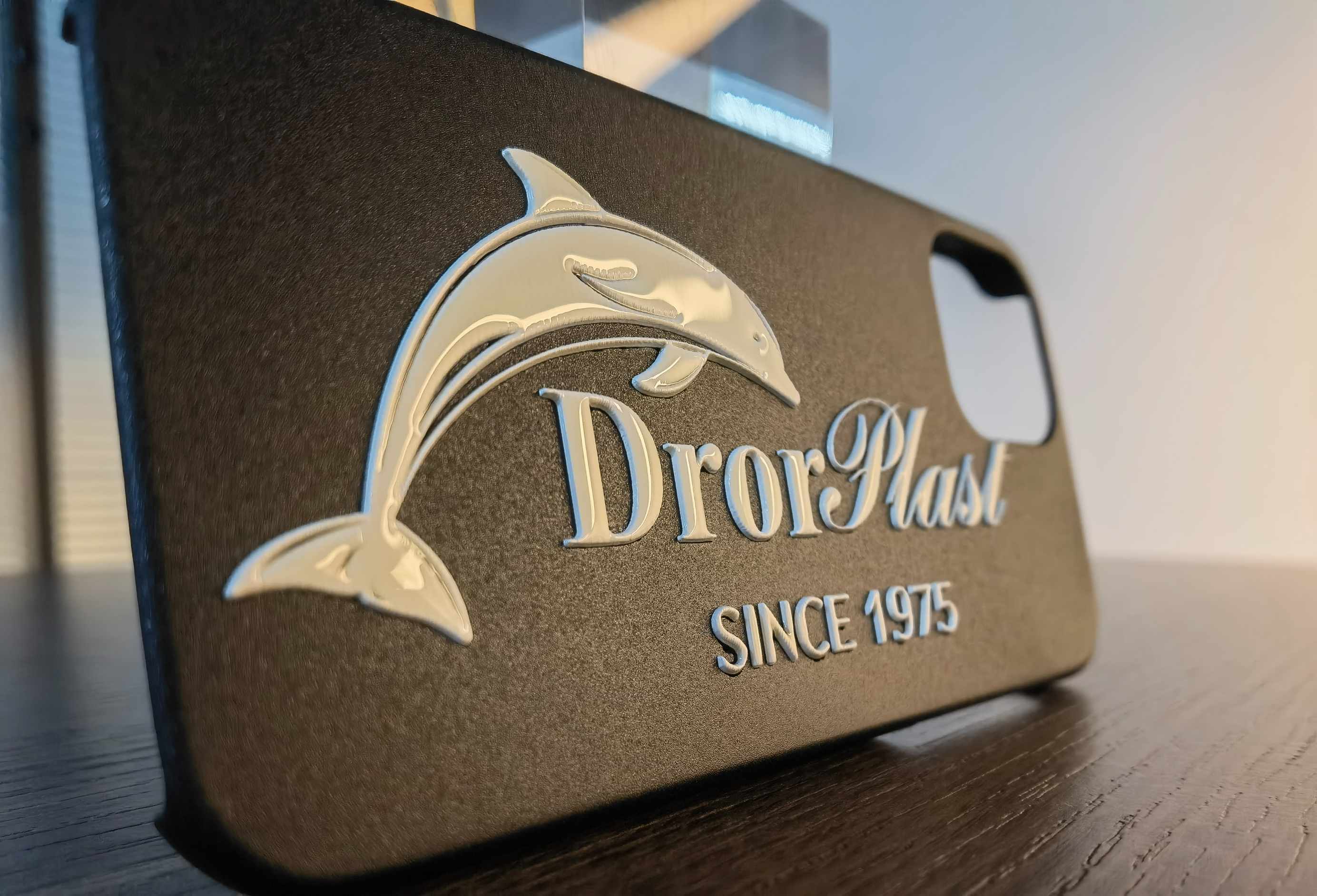In this article, we will explore the key differences between UV Direct Printing and UV DTF Printing by comparing their application process, material compatibility, speed, visual effect, durability, precision and resolution, and flexibility.
UV Direct Printing, also known as UV flatbed printing, involves printing images directly onto rigid or flat substrates using a UV flatbed printer. The UV light instantly cures the ink during the printing process, resulting in a durable, anti-scratch, and high-quality finish.
UV DTF Printing is a more recent development in the printing industry that involves printing images onto a release film using a UV DTF printer. The images are then transferred onto various substrates using adhesive. This method allows for greater flexibility as it can be applied to a wider range of substrates, including curved and uneven surfaces.
Key differences between UV Direct Printing and UV DTF Printing
1. Application Process
UV Direct Printing uses UV flatbed printers to print images directly onto the substrate. It is an efficient process that works well with flat, rigid surfaces, as well as round products such as mug and bottle.

UV DTF Printing involves printing the image onto a thin adhesive film, which is then applied to the substrate. This process is more versatile and suitable for curved or uneven surfaces, but requires manual application, which could be prone to human error.

2. Material Compatibility
While both methods can be used with various materials, UV Direct Printing is best suited for printing on rigid or flat substrates. UV DTF Printing, however, is more versatile and can be applied to a wider range of substrates, including curved and uneven surfaces.
For UV Direct Printing, some substrates like glass, metal, and acrylic may require the application of a primer to enhance adhesion. In contrast, UV DTF Printing does not require a primer, making its adhesion more consistent across different materials. It is important to note that neither method is suitable for textile printing.
3. Speed
UV DTF Printing is generally faster than UV Direct Printing, particularly when printing small logos on items such as mugs or bottles. The roll-to-roll nature of UV DTF printers allows for continuous printing, increasing efficiency compared to the piece-by-piece printing of UV flatbed printers.
4. Visual Effect
UV Direct Printing offers greater flexibility in terms of visual effects, such as embossing and varnishing. It does not always require varnish, whereas UV DTF Printing must use varnish.

UV DTF Printing can achieve gold metallic prints when using gold film, adding to its visual appeal.
5. Durability
UV Direct Printing is more durable than UV DTF Printing, as the latter relies on adhesive film that can be less resistant to wear and tear. However, UV DTF Printing offers more consistent durability across various materials, as it does not require primer application.
6. Precision and Resolution
Both UV Direct Printing and UV DTF Printing can achieve high-resolution prints, as the print head quality determines the resolution, and both printer types can use the same model of print head.
However, UV Direct Printing offers more precise positioning due to its accurate X and Y data printing, while UV DTF Printing depends on manual application, which may lead to errors and wasted products.
7. Flexibility
UV DTF Printing is more flexible, as the printed stickers can be stored for a long time and used when needed. UV Direct Printing, on the other hand, can only produce the printed products after printing, limiting its flexibility.
Introducing the Nova D60 UV DTF Printer
As the market for UV DTF printers heats up, Rainbow Industry has launched the Nova D60, a cutting-edge A1-sized 2-in-1 UV direct-to-film sticker printing machine. Capable of producing vibrant, high-quality prints on release film, the Nova D60 is designed to meet the needs of both entry-level and professional customers. With a 60cm print width, 2 EPS XP600 print heads, and a 6-color model (CMYK+WV), the Nova D60 excels in printing stickers for a wide variety of substrates, such as gift boxes, metal cases, promotional products, thermal flasks, wood, ceramic, glass, bottles, leather, mugs, earplug cases, headphones, and medals.
If you're looking for bulk production capabilities, the Nova D60 also supports I3200 print heads, enabling a production rate of up to 8sqm/h. This makes it an ideal choice for bulk orders with short turnaround times. In comparison to traditional vinyl stickers, UV DTF stickers from the Nova D60 boast excellent durability, being waterproof, sunlight-proof, and anti-scratch, making them perfect for long-term outdoor use. The varnish layer on these prints also ensures an impressive visual effect.
The Nova D60's all-in-one compact solution saves space in your shop and shipping costs, while its 2 in 1 integrated printing and laminating system ensures a smooth, continuous workflow, perfect for bulk production.
With the Nova D60, you'll have a powerful and efficient UV DTF printing solution at your fingertips, offering a fantastic alternative to traditional UV Direct Printing methods. Welcome to contact us and get more information like complete printing solution, or free knowledge.
Post time: Apr-28-2023

